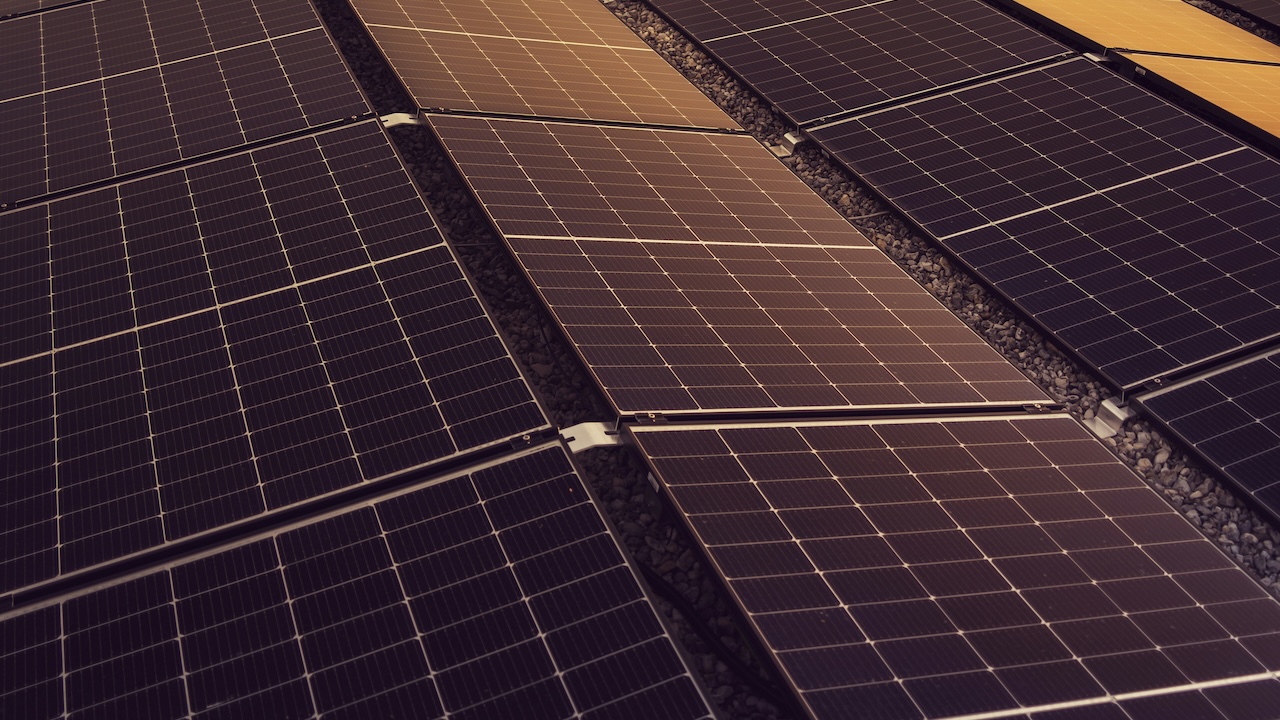In this Article
Understanding your solar energy data can dramatically improve your system’s performance, financial return, and lifespan. By correctly analysing your solar data with AlphaX Solar Analytics, you can quickly pinpoint equipment issues, measure total energy production, and detect subtle changes or anomalies in your solar energy profile. Here’s how to identify key trends and turn your data into action.
Monitoring Equipment Condition: Identifying Faults Early
One of the most critical aspects of managing a high-performing solar energy system is monitoring the health of your equipment—particularly inverters, which are central to the system’s performance. Inverter faults can significantly reduce energy production, impact system reliability, and, if left undetected, lead to costly repairs or prolonged downtime.
AlphaX Solar Analytics provides a proactive, data-driven approach to equipment condition monitoring, helping you detect issues early and respond quickly—before minor issues become major problems.
There are several common types of inverter faults, each with unique symptoms that can be identified using advanced analytics:
- DC Overvoltage or Undervoltage Faults: These occur when the DC voltage supplied by the solar panels is outside the inverter’s safe operating range. Symptoms include sudden drops in power output, often occurring during peak sunlight hours. In AlphaX, this would appear as a steep dip or flat line on a power output line chart, often repeating at the same time each day.
- Grid Faults or Frequency Errors: Inverters are designed to disconnect from the grid if the grid voltage or frequency is outside normal limits. This results in intermittent shutdowns or short production gaps. On the platform, you’ll notice irregular gaps in energy production, even during ideal sunlight conditions.
- Overtemperature Warnings: Inverters can shut down or reduce output when internal temperatures rise too high—usually due to poor ventilation or extreme weather. Symptoms include gradual or sporadic power output reduction, often seen as a plateau in the performance curve. AlphaX can correlate these trends with temperature data and flag potential thermal issues.
- Ground Faults or Insulation Errors: These faults are safety-related and usually cause a complete shutdown of the inverter. You’ll see a sudden drop to zero production, followed by prolonged inactivity. AlphaX will instantly detect the anomaly, cross-reference it with inverter diagnostics (if enabled), and send an alert with the fault type.
- String-Level Issues (e.g., disconnected strings or shading problems): These are subtler faults where only part of the system is affected. They show up in analytics as lower-than-expected power output, despite good weather and solar radiation. With AlphaX’s anomaly detection algorithms, these deviations are flagged early—even if they’re just a 10–15% drop in expected performance.
Using AlphaX’s analytics platform, you can easily visualise these issues through interactive dashboards, daily performance line charts, or map views that highlight problematic sites or equipment in real time. The system’s optional inverter diagnostics also allows you to pull detailed fault codes directly from the inverter for precise fault identification.
Combined with AI-powered anomaly detection, AlphaX ensures that even subtle performance issues are surfaced early—so your team can take action before they affect overall system performance.
Tracking Total Energy Production: Ensuring ROI
Tracking total energy production is one of the most important metrics when assessing the performance and return on investment (ROI) of your solar energy system. For enterprises and government organisations alike, consistent and accurate production data is essential not just for day-to-day operations, but for long-term financial planning, reporting, and justifying solar infrastructure investments.
AlphaX Solar Analytics enables you to monitor your system’s energy output in real time and compare actual production against expected values—providing a clear picture of whether you are meeting your financial and sustainability objectives.
When your system is achieving its expected ROI, your production data typically shows:
- Steady or upward trends in total monthly or quarterly production, visible in bar charts or cumulative line charts.
- Performance closely aligned with solar radiation patterns, showing strong correlation between weather conditions and energy generation.
- Consistent production patterns across all sites, with minimal variation from site to site, assuming similar environmental conditions and system specifications.
- A growing cumulative production curve that reflects continuous energy generation and supports accurate savings and payback period calculations.
In this case, you’ll likely see a stable or decreasing cost-per-kWh over time and a strong contribution to energy offset goals. AlphaX can also automatically calculate ROI metrics, giving you instant visibility into cost savings and payback performance.
When your system is underperforming or not achieving ROI, the trends become more fragmented or inconsistent. Warning signs include:
- Sudden drops or gradual declines in monthly production, shown as noticeably shorter bars in a monthly bar chart, which may indicate system degradation, equipment faults, or shading issues.
- Flatlines or plateaus in a cumulative line chart, indicating production has stalled or is growing at a much slower rate than expected.
- Production diverging from solar radiation patterns, which may signal underperformance not linked to environmental conditions—such as faulty panels, string-level issues, or dirty modules.
- High variability between similar sites, pointing to inconsistencies in system condition, maintenance, or configuration.
These trends directly impact your ROI by reducing energy offset, increasing reliance on grid power, and extending your payback period. Left unchecked, even a 10–15% performance drop across a portfolio can result in significant financial loss over time.
AlphaX Solar Analytics not only highlights these trends clearly, but also helps you understand why they’re happening. By comparing production data with weather inputs, identifying anomalies, and benchmarking site performance, the platform enables fast, data-driven action to restore optimal system output.
Understanding Production Shapes: Analysing Trends and Slopes
Beyond totals and summaries, understanding the shape of your solar production curve provides deep insight into your system’s efficiency and behaviour. A typical healthy solar day displays a smooth, bell-shaped production curve—rising in the morning, peaking mid-day, and tapering in the afternoon.
When production shapes start to change, it’s often an early indicator of system inefficiencies. AlphaX Solar Analytics helps you spot these shifts quickly using daily or weekly line charts, often compared with historical baselines or theoretical performance models.
Common anomalies include:
- Flattened peak slopes, suggesting panel soiling, degradation, or shading during high-production hours. These usually show up as production curves with “soft” or rounded peaks instead of sharp ones.
- Sudden mid-day drops, often indicating string-level faults or temporary inverter shutdowns. These appear as sharp valleys or dips in otherwise normal curves.
- Asymmetrical curves, where morning or afternoon production is consistently lower, potentially pointing to orientation issues, tree growth, or soiling on one side of the array.
- Low-production plateaus, where output never reaches expected peak levels—often caused by ageing inverters or system misconfiguration.
These trends may only impact daily production by 5–15% initially, but over time, they accumulate into significant losses. Using AlphaX’s AI tools, even small shifts in production curve slopes (as low as 2–3%) are detected automatically, triggering alerts and diagnostic suggestions before losses become critical.
How AI Accelerates Your Solar Data Analysis
Manually identifying changes or anomalies in solar production across multiple sites is time-consuming and often inconsistent. That’s where AlphaX Solar Analytics stands apart—through its advanced, intelligent anomaly detection engine, powered by cutting-edge AI.
AlphaX doesn’t rely on just one method to detect irregularities. Instead, it uses a suite of 16 specialised anomaly detection algorithms, each designed to identify different types of performance deviations across varying data patterns, system sizes, and site conditions. These algorithms include techniques such as statistical thresholds, rolling averages, change-point detection, seasonal trend decomposition, and machine learning-based pattern recognition.
When data is received, each algorithm is automatically assessed in real time to determine which method is the best fit for the specific site’s operating conditions and production history. This ensures that anomalies are not just flagged, but evaluated with the most appropriate lens—improving accuracy and reducing false positives.
Once an anomaly is detected—whether it’s a gradual decline in performance, an unexpected dip in production, or a deviation from the typical daily production curve—AlphaX provides clear, actionable feedback to the user. This includes:
- The type and severity of the anomaly
- Suggested causes based on algorithmic pattern matching
- Recommended actions or follow-up investigations
This intelligent process ensures your team is alerted only when something truly matters—helping you respond faster, reduce downtime, and protect the performance of your solar investments.
With AlphaX Solar Analytics, you’re not just monitoring solar data—you’re staying ahead of it.
Related Blog Posts
How Smart Cities Connect: Getting Started with Edge AI and IoT Technology
How to Get Started with Edge AI and IoT Technologies in Smart Cities: Overcoming Integration Challenges In recent years, the concept of smart cities has evolved from a futuristic Read More
5 Step Strategy: Ensuring Security and Privacy in 15-Minute Smart Cities
Introduction Ensuring security and privacy in 15-minute smart cities is a critical challenge as urban areas become increasingly connected through IoT and edge AI technologies. These cities aim to Read More
What is a smart city and the challenge of legacy systems
How to Get Started with Integrating Legacy Systems in Smart Cities Smart cities are transforming urban landscapes by leveraging technology to improve the quality of life for residents. However, Read More




